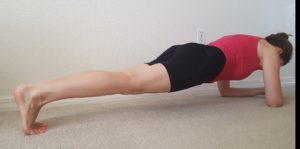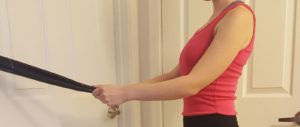Post-Partum Strengthening and Return to Exercise
After nine months of carrying your baby to maturity, it is time to get into a healthy routine of physical activity and wellness. During pregnancy, your body produces increased levels of estrogen and relaxin hormones, resulting in loose ligaments throughout the body. Increased slack at a joint can result in pain and instability. For example, two out of three women experience a separation in their ab muscles, resulting in low back pain and pelvic instability. These hormonal changes during pregnancy can persist weeks post-partum. Therefore, it is important to give your body a strong foundation through strengthening.
Strengthening and improving pelvic instability through exercise not only improves mood states but also mental acuity and fitness. It reduces fatigue and decreases the risk for developing future chronic health conditions, such as stress incontinence. A study concluded that performing abdominal exercises for 6 weeks following delivery resulted in increased abdominal strength and reduced separation of the abdominal musculature compared to those who used a post-natal supporting belt.
There are several ways to resume your exercise routine. It is important to begin when medically safe. Typically, women are cleared for exercise 6-8 weeks post-partum. If you had a C-section delivery, the healing process may be longer. When cleared, perform light to moderate intensity exercise and increase gradually. Perform higher repetitions with longer rest breaks and lower weight.
The following exercises target core and pelvic stability post-pregnancy:
Posterior pelvic tilt with hip adduction squeeze

Lie on your back with your knees bent with a pillow between your knees.
Flatten your back against the floor. Think about bringing your belt to your belly button.
Squeeze the pillow and your gluteal muscles ten times while holding each squeeze for 5 seconds.
Repeat this 3 times. Don’t hold your breath!
With outstretched arms or supported with elbows, engage your abdominal and gluteal muscles for a static hold.
Start with 10-15 seconds, 3 repetitions, and increase as appropriate.
Do not let your hips drop or your low back arch.
Pelvic floor activation
Sit or lie down with your knees bent, think about holding your bladder in for 5 seconds and then relax the muscles. This contraction will help activate the muscles of the pelvic floor. Perform throughout the day.
Stand or sit on an exercise ball. Using dumbbells or tubing, perform a posterior pelvic tilt to engage your core musculature and squeeze your shoulder blades together. Do not shrug your shoulders.
References:
http://bjsm.bmj.com/content/37/1/6.full
http://journals.lww.com/acsm-healthfitness/Fulltext/2014/11000/Postpartum_Exercise.3.aspx










